Free-flight and tracking experiments of a multi-parabola laser propulsion vehicle
- PMID: 40319109
- PMCID: PMC12049452
- DOI: 10.1038/s41598-025-00429-0
Free-flight and tracking experiments of a multi-parabola laser propulsion vehicle
Abstract
A free-flight experiment involving a multi-parabola laser propulsion vehicle was conducted using repetitive laser pulses at a repetition frequency of 50 Hz and an energy of 4.93 J per pulse. Observations made with a camera indicated that the vehicle achieved a maximum altitude of 110 mm; however, it deviated from the laser beam line due to initial misalignment of the laser setup. To improve flight stability, we developed a tracking system to monitor the vehicle's motion and control the laser irradiation position. Performance requirements were assessed based on the free-flight experiment data, revealing that the vehicle attained a maximum translational speed of 0.08 m/s before deviation occurred. Our tracking system was evaluated to have a trackable speed of 0.09 m/s, meeting the performance requirements for free flight and capable of stabilizing the repetitive pulse flight of a laser propulsion vehicle.
Keywords: Free flight; Laser propulsion; Tracking system.
© 2025. The Author(s).
Conflict of interest statement
Declarations. Competing Interests: The authors declare no competing interests.
Figures

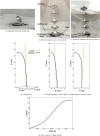
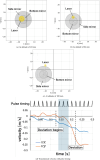
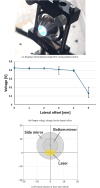
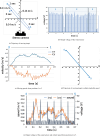
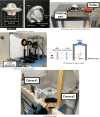


References
-
- Oda, Y. & Komurasaki, K. Plasma generation using high-power millimeter-wave beam and its application for thrust generation. J. Appl. Phys.100, 113307 (2006).
-
- Oda, Y. et al. A study on the macroscopic self-organized structure of high-power millimeter-wave breakdown plasma. Plasma Sources Sci. Technol.29, 075010 (2020).
-
- Fukunari, M., Arnault, A., Yamaguchi, T. & Komurasaki, K. Replacement of chemical rocket launchers by beamed energy propulsion. Appl. Opt.53, 16–22 (2014). - PubMed
-
- Nakamura, Y. & Komurasaki, K. Theory and modeling of under-critical millimeter-wave discharge in atmospheric air induced by high-energy excited neutral-particles carried via photons. Plasma Sources Sci. Technol.29, 105017 (2020).
-
- Vikharev, A. L., Gorbachev, A. M., Kim, A. V. & Kolysko, A. L. Formation of the small-scale structure in a microwave discharge in high-pressure gas. Soviet J. Plasma Phys.18, 554–560 (1992).
Grants and funding
LinkOut - more resources
Full Text Sources

